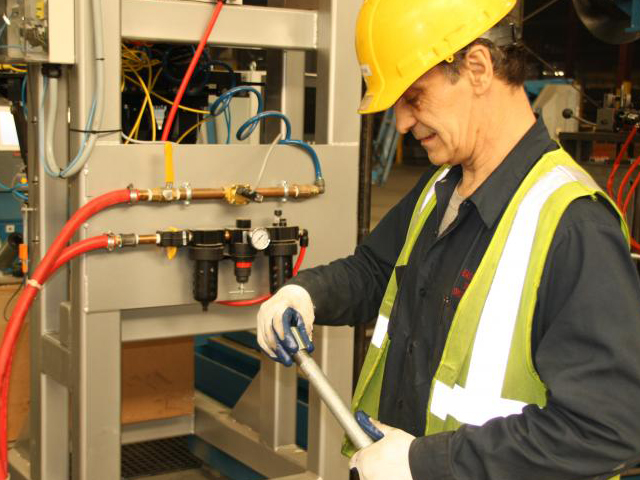Instrumentation & Control
HISTORY OF PROCESS CONTROL
During the first industrial revolution the work done by human muscles was gradually replaced by the power of machines. Process control opened the door to the second industrial revolution, where the routine functions of the human mind and the need for the continuous presence of human observers were also taken care of by machines. As a result, the human operator was relieved of the more creative aspects of operating plant. In that senses process control has made optimizations and thereby the beginning of the third industrial revolution, possible. In the third industrial revolution the traditional goal of maximizing the quality and durability of the produced goods, while minimizing the consumption of energy and raw materials and maximizing recycling and reuse. Optimized process control will be the motor of this third industrial revolution.
Automatic control may possibly have been used in Egypt, Greece or Rome in Connection with Irrigation or water distribution works, but we do not know that for sure. The first known automatic control system, the fly-ball governor, was installed on Watts steam engine over 200 years ago in 1775. As shown in Figure 1, the fly-balls detected the speed of shaft rotation and automatically opened up the steam supply when a drop was registered in the speed of rotation. Another century went by before the first mathematical analysis of the fly-ball governor was prepared by James Clark Maxwell in 1868. Using something if it does the job, before we fully understand why and how it does the job, is common practice in process control. Janos Von Neumann put it this way:-
"There is no point in using exact methods where there is no clarity in concepts and the issues to which they are to be applied." The spreading use of steam boilers contributed to the introduction of other automatic control systems, including various steam pressure regulators and the first multiple – element boiler feed water systems. Here again the application of process control was ahead of its theory, as this first feed forward control system was introduced at a time when even the term "feed forward" had not yet been invented, let alone understood.
Actually, the first general theory of automatic control, written by Nyquist, did not appear until 1932. In 1958 Donald P. Eckmand's classic Automatic Process Control was published, and even after that, for several decades, most universities and academic as a whole, treated the teaching of process control as if it were just another course in mathematics. Courses on process control concentrated on teaching the techniques of frequency domain analysis, while the process control engineers in the field all worked in the time domain.
Throughout the evolution of process control, progress was always made by the practical users out in the field and not by the mathematically oriented theoreticians. Gulf Consult High – Tech provide the know- how needed for the practice of process control, but the most important ingredient can only be provided by in-depth understanding of his or her own process. Before one can control process, one must fully understand it.
"Al Keiadiyoon United Trading & Contracting Co.", the specialist in this field will be the partner, you can trust.




